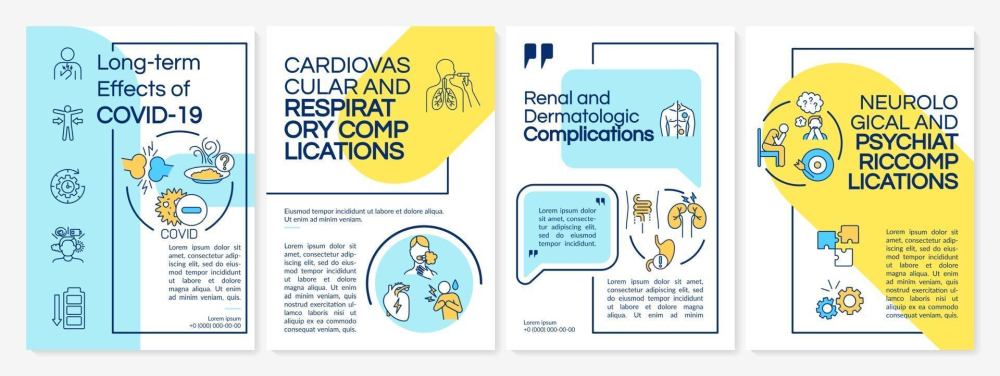Authors: By Dr. Ramya Dwivedi, Ph.D.
Coronavirus disease 2019 (COVID-19) has caused over 3.75 million deaths worldwide through infection with severe acute respiratory syndrome coronavirus 2 (SARS-CoV-2). In Canada, COVID-19 has accounted for over 1.4 million infections and over 25,000 deaths.
Acute COVID-19 illness typically lasts two to six weeks; however, some patients have reported debilitating symptoms persisting or recurrent for weeks or months after the acute illness has ended. Affected patients are commonly referred to as “COVID-19 longhaulers” or “Long COVID” sufferers.
In a recent study, Canadian researchers documented the prevalence of post-COVID-19 conditions 4-12 weeks (short-term) and >12 weeks (long-term), by conducting a systematic review of peer-reviewed literature.
The researchers adapted and updated a previous search strategy used by the U.K. National Institute for Health and Care Excellence (NICE). They looked for research published between October 22, 2020, to January 15, 2021, in the following databases: Embase, Medline, PsychInfo, and Cochrane Central.
Interestingly, the work is described as a living systematic review, and the researchers assured that they aim to update their findings regularly as new evidence arises, including an update in the fall of 2021.
“This is the first publication of this living review that will be periodically updated as critical additions to the literature are published.”
From this review, the researchers found that while 83% of the individuals reported persistence or presence of one or more symptoms in the short term, 56% reported long-term symptoms. The most prevalent symptoms in both periods included fatigue, general pain or discomfort, sleep disturbances, shortness of breath, and anxiety or depression.
Additionally, the researchers also observed many other mild to severe and debilitating symptoms experienced by a large proportion of convalescent COVID-19 cases.
“Our data indicate that a substantial proportion of individuals reported a variety of symptoms ≥4 weeks after COVID-19 diagnosis,” the researchers interpreted. However, due to low certainty in the evidence, they call for further research to determine the actual burden of post-COVID-19 conditions.
Related Stories
- Natural vs. vaccine-induced COVID-19 immunity
- Study shows efficacy of Pfizer-BioNTech and Moderna vaccines against SARS-CoV-2 delta variant
- Antibody responses following SARS-CoV-2 infection more potent than vaccine-elicited ones
The researchers presented the PRISMA flow diagram of articles through the systematic review process; out of the 2807 unique citations, they selected 36 observational studies that met their selection criteria.
Here, they looked for the primary outcomes, any symptom, sequelae, or outcomes pertaining to difficulties conducting usual activities (i.e., functional outcomes) reported by individuals 4 or more weeks after a COVID-19 diagnosis, with key symptoms or sequelae of interest identified as the following: fatigue shortness of breath, neurocognitive impairment, pain (in the joints, chest or muscles), organ damage, dizziness, tachycardia, chest tightness or heaviness, olfactory and taste impairments and sleeping disturbances.
In this review, the researchers have used the term “post-COVID-19 conditions” to describe persistent symptoms, that is synonymous with long COVID, post-COVID conditions, chronic COVID syndrome and post-acute sequelae of SARS-CoV-2 infection (PASC). Also, the ‘long-term’ is defined as a period varying from ≥4 to ≥12 weeks after COVID-19 diagnosis, and the patients affected long-term are referred to as COVID-19 long haulers.
This review presented that consequent to the symptoms experienced by the individuals, roughly 30% and 10% of them were unable to return to work in the short- and long-term following COVID-19 diagnosis, respectively.
“However, due to low certainty in the evidence, true clarity around the burden of post-COVID-19 conditions will require further work to untangle the sequelae caused directly by COVID-19 infection from those arising from related factors such as extensive hospital care due to severe illness.”
They discussed the many limitations in this study; for example, the prevalence of long-term effects in children, in asymptomatic individuals, small sample sizes in many studies or risk bias, presence of other contributing factors, effects of the treatment received, or effects of being hospitalized or admitted to the ICU, and effects due to the pandemic itself (e.g., barriers to seeking treatment, psychosocial impacts).
“This evidence is expected to support national and international public health organizations who are in the process of planning for and developing supportive measures for patients with post-COVID-19 conditions.”
It is estimated that millions of people suffer from post-COVID-19 conditions. Its ramifications on healthcare utilization will be large and lasting for some time. Thus, the researchers in this study emphasized understanding the prevalence of these conditions, the effects on COVID-19 survivors, and resolution over time – to aid and address this issue.
This review highlights the complications and thus the need for a multi-disciplinary approach in developing appropriate diagnostic models and tools, patient care pathways, and support structures to address the needs of those suffering from post-COVID-19 conditions.
*Important Notice
medRxiv publishes preliminary scientific reports that are not peer-reviewed and, therefore, should not be regarded as conclusive, guide clinical practice/health-related behavior, or treated as established information.
For More Information: https://www.news-medical.net/news/20210609/Review-of-COVID-19s-long-term-effects.aspx
